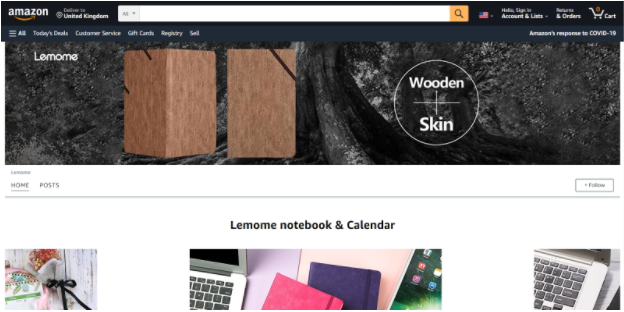Mall staff step out for hospital charity
May 12, 2021Tear Drop Now Available in local bars and Restaurants
May 12, 2021
Billions of people worldwide are buying goods and services online. With the massive number of digital buyers, no wonder many people start seeing this as an opportunity to build an online store. The bad news is more than 90% of them fail even within less than two years.
To make sure this doesn’t happen to your online business, let’s uncover six vital points that can help you be prepared and gain long-term success.
1. Web Host and Domain Name
A reliable web host and a good domain name are essential to setting up a website and starting an online business.
Look for a hosting provider that can offer enough storage, guarantee reliable uptime, and provide enough bandwidth, like Hostinger web hosting.
Also, make sure to choose a web hosting plan that offers suitable security measures, like an SSL certificate and malware protection.
When choosing a domain name, match it with your brand name for consistency. Also, make sure it’s easy to spell and pronounce so that it’s easier to remember.
2. Business Plan
A solid business plan helps clarify your goals, spot the problems in advance, and build a road map for the future. It also plays a vital role in persuading external parties like investors.
Here are some elements you should include in your business plan:
- Company description. It consists of the founders, vision and mission, brand name, and type of business, such as sole proprietorship or partnership.
- Products and services. Explain a range of products, their features and benefits, and what makes you different from other existing businesses in the industry.
- Logistics and operations plan. Introduce the product suppliers, storage spaces, and shipping processes.
- Marketing plan. Includes the target market segmentation, competitive analysis, and eCommerce marketing strategies, like content marketing and search engine optimization (SEO) plans.
- Financial projections. Calculate revenue sources and expenses during a specific period – a month, a quarter, and a year.
3. Target Audience Research
Having a clear target audience can direct you to a specific group of people that are already interested in your product or service. It can help you figure out which channels to use to reach the audience, what publications to write to, and how to approach potential customers.
There are two ways to gather information about your target audience:
- Primary – includes interviews, surveys, and other feedback straight from the target market.
- Secondary – comes from other people’s research, like public records and market statistics.
4. Products to Sell
When choosing a product to sell, start by picking a niche. It can be based on types of the industries like traveling and fashion or demographics like university students or older people.
There is a wide variety of things to sell in an online store, including:
- Services. E.g., public speaking and copywriting.
- Physical products. E.g., foods and apparel.
- Digital products. E.g., eBooks and graphics.
- Websites or applications. E.g., an online course website with a subscription.
To set the price, calculate your expenditures and look at the market. If you charge more than the competitors, tell customers what kind of unique value you offer.
5. Online Store Platform
You have a lot of options when it comes to online store platforms. Two main options are:
- An eCommerce website

- Pros: It offers freedom of customizability and overall setup. With the web host offering a secure HTTPS certificate, you can keep hackers from accessing sensitive information, like users’ profiles and credit card details.
- Cons: Acquiring customers may be challenging as many people are unaware of new brands. Custom website development can also be pricey, starting from $1,500 to $60,000.
- Existing online marketplaces, like Amazon and eBay

-
- Pros: They’re already trusted by online shoppers, which can be your source of traffic. People with no experience in web development can still easily add items and change prices.
- Cons: It has a high level of competition. Many marketplaces also charge for product listing and commission for every transaction.
6. Advertisement Strategies
Coming up with a list of eCommerce marketing strategies is easy. However, understanding which tactics can level up your business will require trial and error.
Here are some popular methods to start.
- Content marketing – one of the major influences in the customer buying process. It educates potential customers about who you are and how your products can address their issues.
- Collaborations – boost your business by tapping into the audience of other brands or people, such as influencers.
- Promotions and giveaways – might not be your daily strategy, but they can improve brand awareness, as well as social sharing and following.
Conclusion
Now that you’ve acknowledged the critical elements when starting an online business, it’s time to get to the practical to-do lists. Purchase the hosting plan and domain, then build your online store and execute the advertisement strategies. Good luck!
